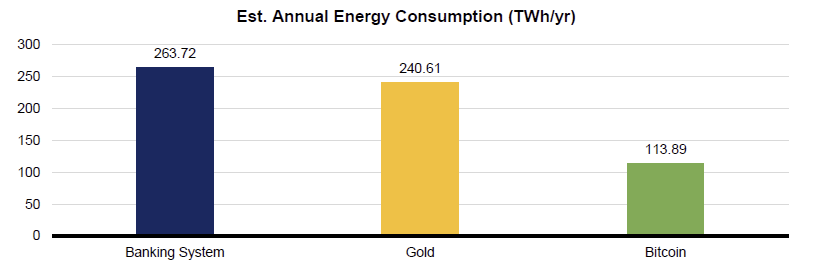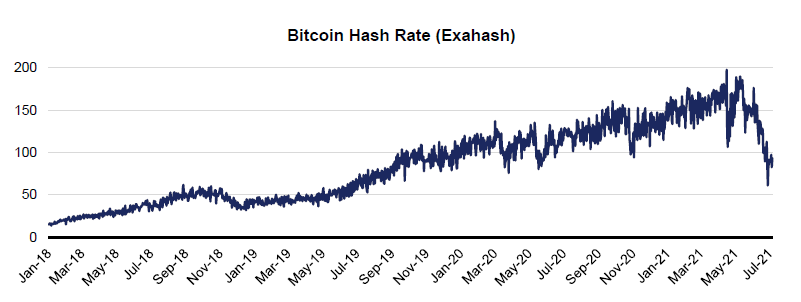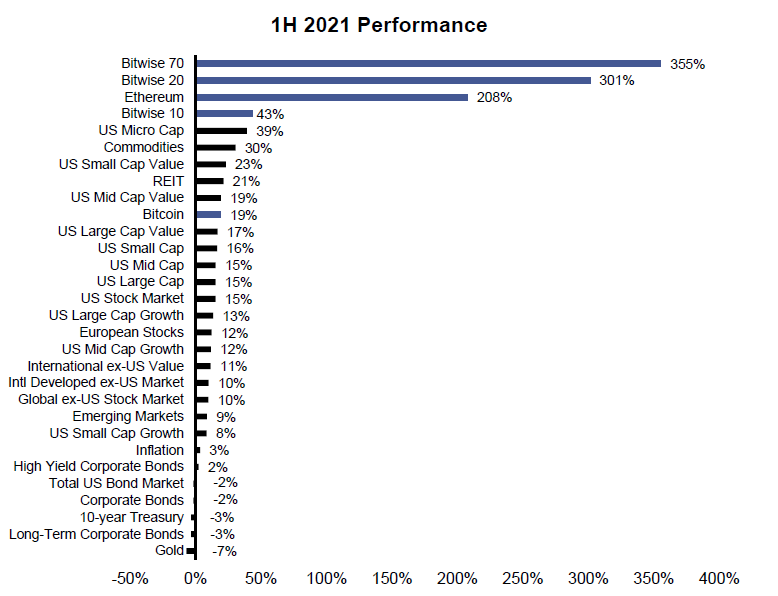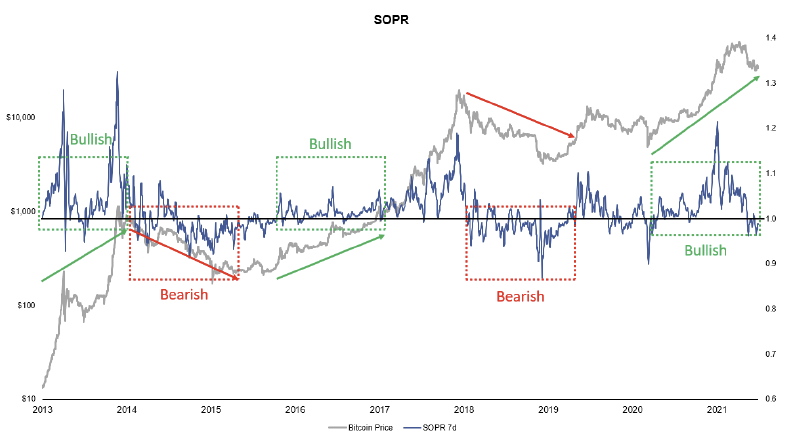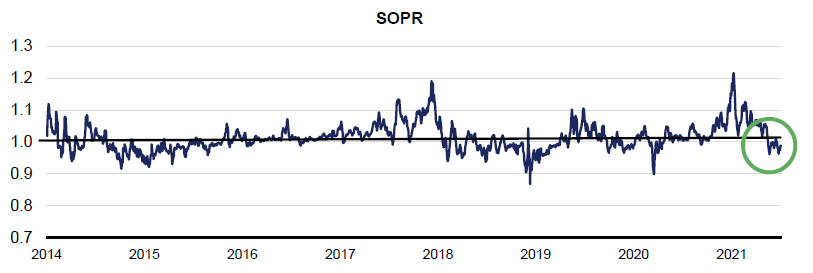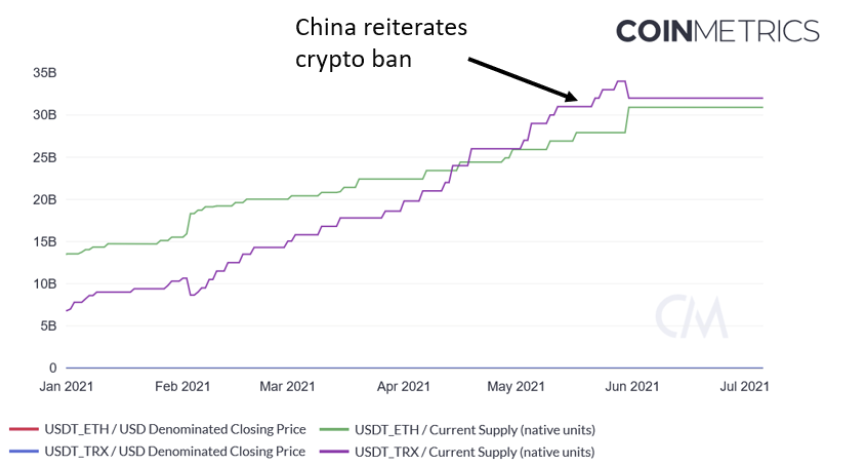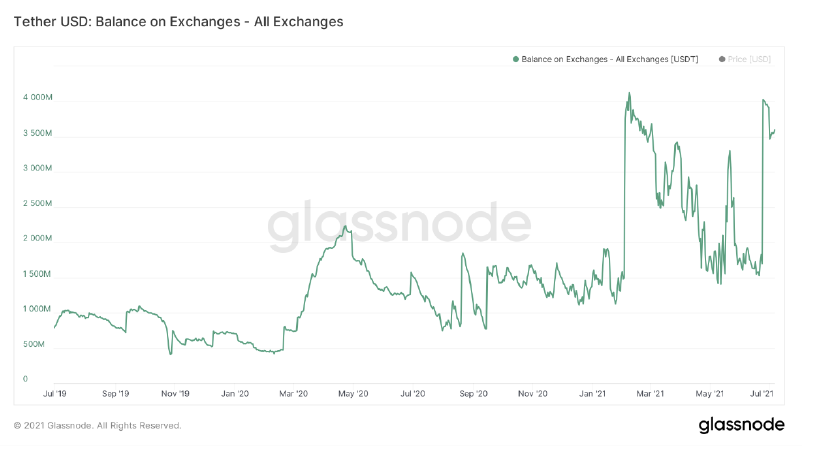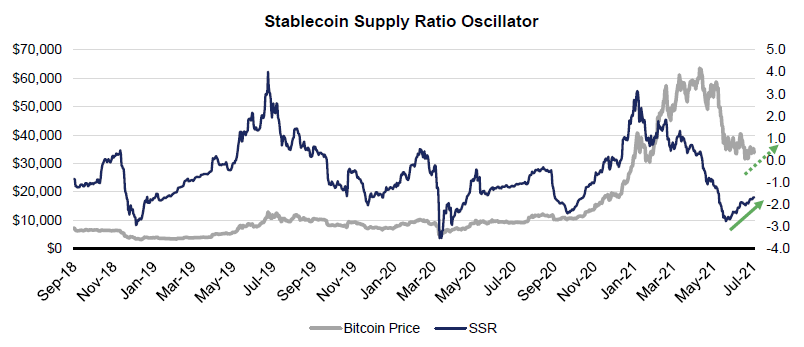1H2021 Digital Asset Observations
This report recaps the most impactful headlines from the first half of 2021. We then review year-to-date digital asset performance and analyze on-chain data to get a sense of where we are in the crypto market cycle.
Battle of the Headlines
Bitcoin’s Environmental Impact
In the first half of 2021 crypto reentered the mainstream, frequently intersecting with the zeitgeist’s most controversial characters like Elon Musk as well as new ones like Salvadoran President Nayib Bukele. These intersections dominated headlines which in turn influenced the performance of digital assets.
Elon Musk, who has skirted the line between protagonist and antagonist ever so carefully began the year as the former – having announced the addition of bitcoin to Tesla’s balance sheet and the acceptance of bitcoin for EV purchases. He also went so far as to give the company’s CFO, Zach Kirkhorn, the secondary title of “Master of Coin” for his role in overseeing Tesla’s adoption of Bitcoin. However, this quickly changed when Elon reversed course – selling 10% of Tesla’s bitcoin position and halting bitcoin EV purchases. His reasoning? Environmental concerns around Bitcoin’s energy consumption. Elon would also note their motivation to test market liquidity.
The following weeks’ news cycles would be focused on environmental FUD (Fear, Uncertainty, Doubt) with Elon doubling down on his concerns and politicians like Elizabeth Warren expressing their outrage over Bitcoin’s energy consumption. While Senator Warren took the opportunity to book a win with her environmentally conscious supporters, the inconsistency of her policy positions became apparent. Being against a free and open monetary system like Bitcoin clashes with her staunch opponency of traditional banking institutions. The Senator’s stance became even more puzzling as researchers in the space, including the team at Galaxy Digital, published analysis comparing Bitcoin’s energy consumption with that of the traditional banking system. They found the banking system – a combination of bank data centers, bank branches, ATMs, and card networks – required more than double the energy consumed by Bitcoin.
Source: Galaxy Digital
Environmental concerns partially subsided over the remainder of 1H2021 as more nuanced understandings of Bitcoin’s energy consumption became widely known. In particular, the use of curtailed energy (energy that otherwise would have been wasted) for bitcoin mining was brought into focus. The prevalence of cheap curtailed energy in China is explained by the overbuild of hydroelectric power plants in the Xinjiang and Sichuan provinces – and gave further insight into why the majority of hash rate has historically resided in the region. Miners are always searching for cheap energy – a key feature of Bitcoin’s design. It also prompted discussions around Bitcoin’s energy mix as many miners utilize green energy sources like hydro to secure the network.
Bitcoin for El Salvador
In June, a new character entered stage left, Salvadoran President Nayib Bukele. Bukele successfully pushed for the adoption of bitcoin as legal tender in El Salvador – reserving himself a top spot on the growing list of protagonists lauded by the Bitcoin community. The “Bitcoin Law” was positioned by Bukele as a means of reducing El Salvador’s reliance on the global banking system which has made remittance costly and inefficient. It is estimated that costs associated with remittance can be upwards of 50%. This has become a growing issue for the country with remittance accounting for 22% of its GDP. El Salvador’s partnership with Strike is expected to reduce remittance costs to near zero using Bitcoin’s Lightning Network. Despite this, skeptics of the legislation were quick point out Bukele’s more antagonistic moments as President, having ordered The Armed Forces to march into parliament during the vote of a controversial crime bill in 2020.
China’s Bitcoin Crackdown
In 1H2021, the CCP continued its starring role as crypto antagonist and steadfast Bitcoin opponent – cracking down on Bitcoin mining and exchanges which have been popular on-ramps to crypto for Chinese nationals. China has “banned” crypto several times over the past few years but its most recent ban, ordered by Vice Premier Liu He, seems to be holding water. Bitcoin miners located in China have shut down operations and are in the process of relocating to more hospitable geographies. The significant decline in Bitcoin’s hash rate corroborates this.
Source: Glassnode
We view the migration of miners out of China positively as it further decentralizes the network and addresses the long-standing concern that China “controls bitcoin” – a common critique brought about by the large share of bitcoin hash rate historically located in the country.
Digital Asset Performance
In 1H2021 Bitcoin posted a 19% gain making it one of the best performers compared to traditional asset classes. Ethereum, on the other hand, significantly outperformed both Bitcoin and traditional asset classes, posting a 208% gain. At face-value Ethereum’s outperformance versus Bitcoin signaled a broader shift towards large cap “alt coins” in 2021. This is further supported by the Bitwise 10 Crypto Index’s 43% gain. The index includes large cap alts like Cardano, Bitcoin Cash, and Litecoin among others.
Source: Fundstrat, Bloomberg
We think Ether’s outperformance can be explained by investors starting to recognize the differentiating characteristics of Ether and bitcoin – treating them as separate and distinct assets. Whereas most investors understand bitcoin to be a store of value or inflation hedge asset, Ether derives its value from Ethereum’s network of decentralized applications or “dApps” by acting as its native currency. If bitcoin is digital and decentralized gold, Ethereum is decentralized AWS or Google Cloud. We expect investors to continue developing their understanding of this distinction over the coming quarters.
Into the On-Chain
We find on-chain data analysis helpful in gauging where we are in the crypto market cycle. On-chain data refers to a blockchain’s transactions/users/activity/flows – much of which can be sliced and diced to create useful metrics for analysis.
One metric we find particularly insightful is SOPR or Spent Output Profit Ratio. SOPR is calculated by taking the realized value and dividing by the value at creation of a spent output. Or simply: price sold / price paid. When SOPR is above 1 it implies owners of the asset are in profit at the time of the transaction. Below 1 implies sellers have capitulated and sold at a loss.
In a bull market, as we expect we are in today, a SOPR below 1 can indicate a local bottom as sellers are reluctant to sell at a loss. In a bear market, a SOPR rising above 1 may catalyze further selling as investors are waiting for the point at which they are break-even on their position to sell.
Source: Glassnode
In May, during the recent bitcoin correction SOPR crossed 1 and has held there since. From our perspective this is a healthy reset of profit taking similar to what we saw in March 2020 which was proceeded by higher prices for the remainder of 2020.
Source: Glassnode
Stablecoins
Stablecoins cemented themselves in 1H2021 – now with a total supply exceeding $100 billion. We think the demand for stablecoins is a strong proxy for the demand for digital assets more generally given the ease of which they can be purchased using stablecoins relative to traditional fiat. High demand for USD stablecoins can be explained by capital flight out of more restrictive fiats like the Yuan. Above we noted China’s crackdown on bitcoin mining evidenced by a decline in bitcoin hash rate. Similarly, China’s crackdown on exchanges may be evidenced by a lack of new USDT issuance.
Source: Coin Metrics
Shortly after China reiterated its crypto ban, USDT issuance ground to a halt. Simultaneously, exchanges are holding near record balances of USDT.
Source: Glassnode
China aside, stablecoin flows are a good indicator of pent-up demand for digital assets. The Stablecoin Supply Ratio gauges this through the relationship between Bitcoin supply and stablecoin supply. A low SSR implies high quantities of stablecoins on the sidelines – or more buying power to purchase risk-on digital assets. SSR appears to have bottomed in May and has been steadily increasing since.
Source: Fundstrat, Glassnode, @woonomic


